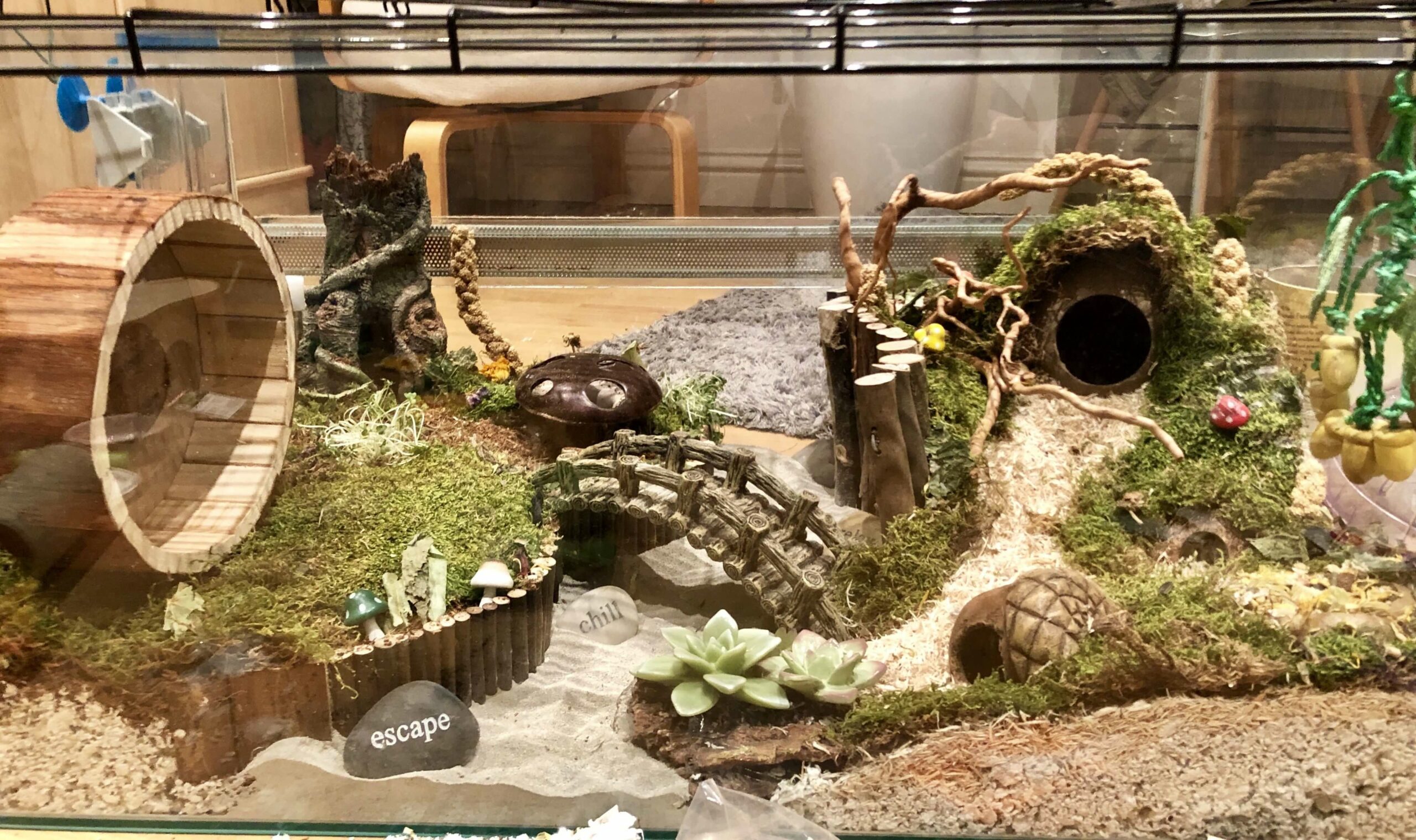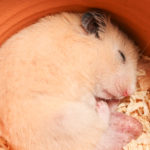More and more hamster owners are upgrading their hamster cages. Many do so by creating stunning natural settings.
Natural hamster cages are a perplexing concept for some, so we’re here to help by providing the necessary information and ideas.
Natural hamster cages are also known as “German-style hamster cages.” These housing options more closely resemble a hamster’s natural environment.
Hamsters are thought to live happier and healthier lives when all-natural materials are used, from bedding to playthings and everything in between.
This may sound a little hazy, but that’s because there is no one “correct” way to build a natural hamster cage!
You are free to use the resources at your disposal to create a cage design that is as simple or as complex as you desire.
Continue reading to find out what kinds of materials make excellent natural hamster homes.
We’ll also show you how to keep these areas clean, as well as some examples of what other creative hamster owners have done!
Why Choose a Natural Hamster Cage Design?
Because they like dry, warm environments, wild hamsters are a good example. These burrowing, nocturnal critters can be found in a wide range of environments, from deserts to steppes.
Hamster cages tend to be higher than they are wide, so this is another factor to consider. In order to make their hamster’s cage more usable, many hamster owners create various levels inside of it.
In part, this is why natural hamster cages are known as “German hamster cages,” as the Germans have a very different approach to hamster care.
They allow their hamsters more room to roam and hide, as their natural instincts tell them to do, by replacing the plastic with natural materials. German hamster cages can be as large as 360 square inches.
Which materials are used in natural hamster cages?
As you may imagine, the goal is to replace as many artificial components as possible with natural ones. This opens up a vast range of options for you to work with.
It’s important to double-check that anything you introduce is safe for hamsters, of course. Hamster-friendly materials are commonly used in the construction of natural hamster cages.
- Aspen shavings
- Rocks
- Grass
- Willow
- Hay
- Cork
- Soil
- Sand
- Driftwood
- Plants
(Note: There are many types of plants that are not safe for use around hamsters. Make sure to check that your chosen plant life will bring them no harm)
While this list is only a rough guideline as to the types of materials commonly used, it is a great starting point.
As long as the material is natural and 100% hamster-safe, it can be used in a German-style hamster cage!
Natural toys and elements are included in this set. For example, you can feed hamsters on them.
Hamster Habitat
What should a hamster’s habitat look like when they’re in a human home?
What kind of cage does a hamster need?
The best cage is one that looks like the hamster’s natural home.
Remember that hamsters live in the wild in places that are warm and dry, where they can burrow, run, and store food.
They also do a lot of things.
The best cage for a pet hamster is big, clean, well-ventilated, and hard to chew on.
This lets the hamster act like it would in its natural habitat.
Hamsters need to be clean.
Hamsters are pretty clean, and they like to take sand baths every now and then.
Still, they can smell if you don’t clean their cage often or if you choose a cage-like aquarium that holds odors.
Hamsters require space.
If you look online you’ll learn that a hamster cage should be about 100 cm by 50 cm.
If you have a dwarf hamster, you might be able to get away with a smaller cage, but in general, the bigger the cage, the better it is for your hamster.
A hamster needs to be able to go up and down.
Hamsters climb and dig. So, make sure your hamster cage has a deep plastic base and a wire top that your hamster can’t chew through.
It’s important to know how deep your cage is because it should be able to hold at least 5 cm of bedding and nesting materials.
On the other hand, the hamster could climb as high as it wanted with the wire top.
Also, your hamster’s home will have at least two levels: one with bedding and one with a plastic shelf on top. Join them with a bridge that curves, and your hamster can run up and down it.
The plastic shelf is for more than just fun. It’s also the best place to put the water bottle for your hamster. So, the sheets will stay clean and dry. Hamsters do not like wet bedding!
A hamster’s habitat needs to be secure.
Hamsters are like little Houdinis, so make sure the cage is locked.
Hamsters like cages that have a solid floor with bedding and nesting materials on it and a lot of room for them to move around.
A hamster’s habitat needs to be full of toys.
Hamsters are very active and can travel for miles at night. So, make sure they have things to play with. They don’t do well when they’re bored.
A hamster that is bored will do bad things (kind of like a child).
If you don’t give it anything to do, it will start chewing on the wire, the plastic base, the bedding, or anything else it can get its teeth on.
Keep them busy by putting as many of the following things in their cage as you can:
- An exercise wheel: If you have a big cage (and you should!), you should be able to fit in a 12-in wheel. This is vital as a hamster can develop back problems if it’s forced to run on a small wheel. Your hamster’s back should be flat when it’s running. Also, avoid all wheels that don’t have a solid running surface as your hamster’s feet could get caught in between.
- Gnawing blocks: Hamsters need gnawing blocks, so their teeth don’t grow too big. Gnawing blocks are to hamsters what scratch posts are to cats.
- Interactive toys: Go with ladders, tubes, shelves, cardboard boxes, and empty toilet paper rolls. These are all things that a hamster finds entertaining.
Pro-tip: Don’t make any sudden changes to your pet’s toys and cage as they find sudden changes incredibly stressful.
What Kind of Cage Should I Use?
Before you go through the trouble of buying or making natural things for your hamster’s cage, you need to make sure you have the right kind of cage.
Traditional cages with bars are usually not good for hamster homes with a natural theme. They don’t look good, are made of plastic or metal, and make a bigger mess outside the cage.
Instead, choose something made of glass. Cages with bars aren’t the only way to keep animals. Glass tanks, like those used for lizards or fish, are already a popular alternative.
They make less mess, look great, and let you check on your hamster whenever you want without waking them up.
Think about how great this natural cage looks. A cage with bars wouldn’t look nearly as good and would definitely take away from the natural look you want.
Draw Inspiration from These Natural Hamster Cages
Even with the information above, it might be hard to picture what we mean by “natural hamster cages.”
One of the best things you can do before building your own natural cage is to look at what other people have done. The hammy community loves to show off what they’ve made.
Look at this amazing cage made of nature:
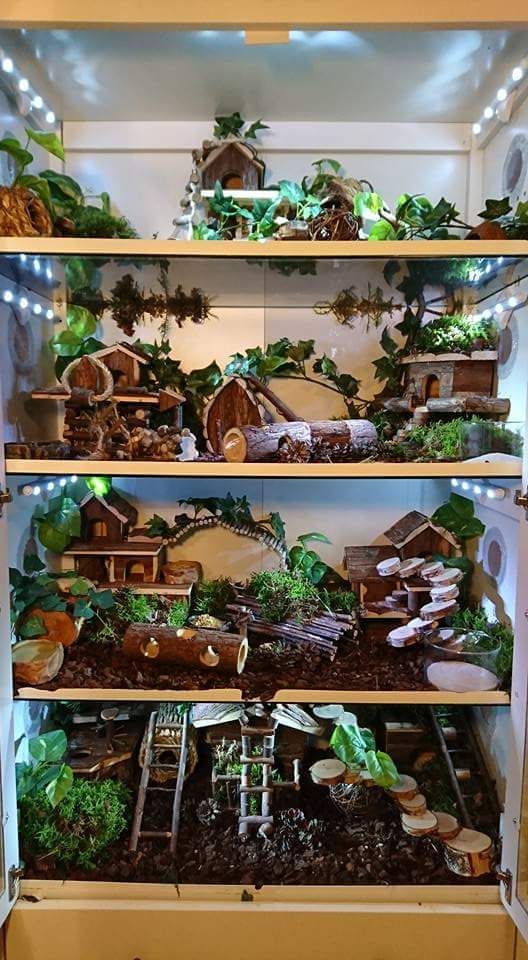
Even though there are still some things that aren’t natural, this Pinterest user made a great German-style cage anyway.
The substrate is easy to dig into, and it’s clear that their hamster has a lot of room to explore.
Do you see the little wooden bridge that goes from the floor of the cage to the hamster’s house?
Many natural hamster cages have bridges that can be bent because they are so useful.
Hamiledyi bridges can be used as bridges or as ramps to help your hamster get around.
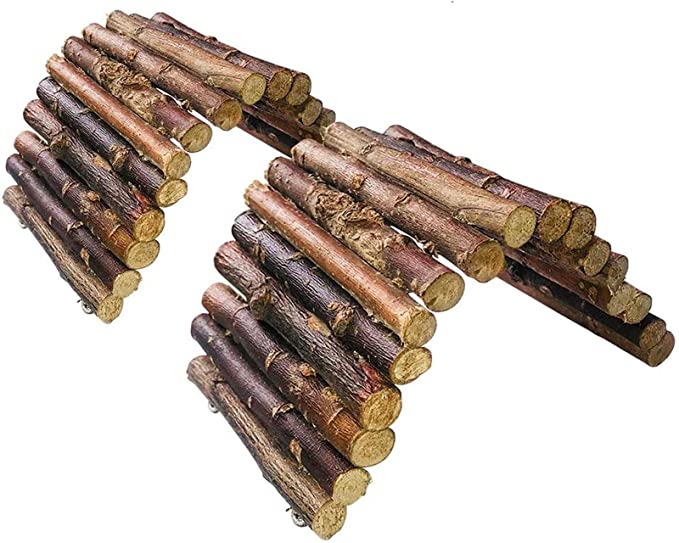
The hamster house or hiding place itself should, of course, be made from natural materials. If you are creative and can find a big coconut, you might want to make a house like this one:
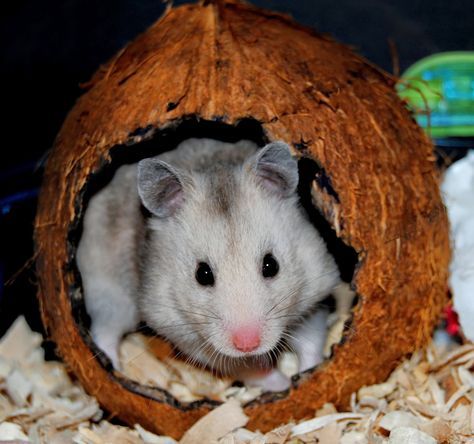
Here is another inspiring hamster cage:
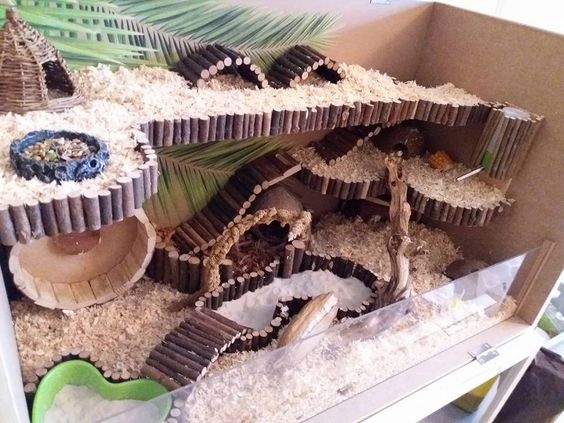
In this cage, you can see that there is wood everywhere! This is a great and easy way to keep things natural, as many different types of wood are safe for use around hamsters.
Here are some more examples:
Natural is the Way to Go, Whenever Possible
We often keep hamsters in ways that are very different from how they would live in the wild. Plastics and small cages have been added more for the comfort of humans than for the hamsters.
Even though there’s no rule that says your hamster can’t be happy in a big, standard cage, there is something to be said for letting it live in the wild.
Putting your hamster in a natural cage is a great way to help them stay in touch with their natural instincts.
By giving your hamster a large, natural, and healthy environment, you are making it feel like it is living in the wild.
Use the above examples to help you design your own hamster cage in the German style. When you know what these cages look like, you can get creative and add your own touches and style.
There is no limit to how far you can go, how complicated or simple your design can be, or how big the cage itself can be.
As much as possible, use only natural materials, and watch your hamster for the first few days in its new home.
Don’t give up if it takes a while to figure out how to make a floor plan that is safe and fun for your hamster.
It’s worth it to have a cage that you and your furry friend are both happy with.
